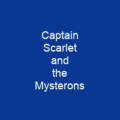Thunderbirds is a British science-fiction television series created by Gerry and Sylvia Anderson. It was made between 1964 and 1966 using a form of electronic marionette puppetry combined with scale-model special effects sequences. Two series, totalling 32 fifty-minute episodes, were filmed. The series has been followed by two feature-length film sequels, a 2004 live-action film and a mimed stage show.
About Thunderbirds (TV series) in brief

Some of IR’s missions are prompted not by innocent misadventure, but sabotage or negligence. For missions requiring criminal investigation or intelligence-gathering, the organisation incorporates a network of undercover agents headed by English aristocrat Lady Penelope Creighton-Ward and her butler Aloysius Parker. The most important of these vehicles are the five \”Thunderbird machines\”, each assigned to one of the five Tracy brothers: Scott, John, Virgil, Gordon and Alan. It is also remembered for its title sequence, which begins with an oft-quoted countdown by Jeff Tracy voice actor Peter Dyneley: \”5, 4, 3, 2, 1: Thunderbird Are Go!\” The series began its first UK run in 1965 on the ITV network, and was also broadcast in around 30 other countries during the 1960s. Periodically repeated, it was adapted for radio in the early 1990s and has influenced many TV programmes and other media. Gerry Anderson drew inspiration for the series’ underlying concept from the German mining disaster known as Wunder von Lengede. In October 1963, a nearby municipality flooded an iron mine. In late 1963, APF’s parent company, ITC, commissioned the series, on the back of the positive audience response to Stingray, to be produced by Gerry Anderson and his business partners Arthur Provis, Reg Hill and John Read.
You want to know more about Thunderbirds (TV series)?
This page is based on the article Thunderbirds (TV series) published in Wikipedia (as of Dec. 05, 2020) and was automatically summarized using artificial intelligence.







